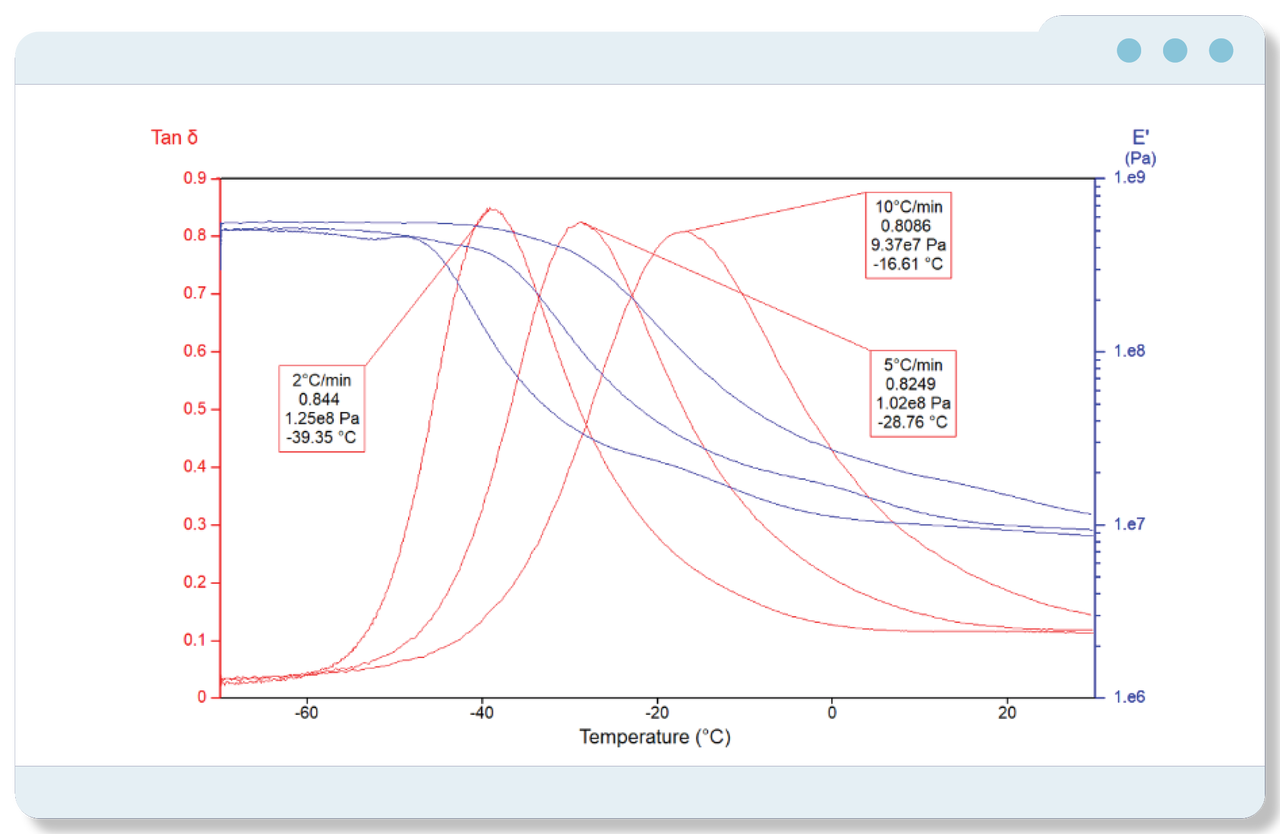Effect of Temperature Increment on Glass Transition Measurements
Temperature sweep is a well known method that involves measuring the viscoelastic behavior while varying the temperature of the specimen. During the temperature sweep measurements, different temperature rates show a significant difference in viscoelastic properties and can also induce a difference in the glass transition peak of the material.
This figure shows the precision of Metravib’s DMA to characterize elastomer storage modulus (E’) and loss factor (Tan δ) with different temperature rates (2°C/min, 5°C/min and 10°C/min). It demonstrates that the glass transition varies a lot with the temperature rate. Out of all the temperature rates, the suggested temperature rate by Metravib for temperature sweeps is 2°C/min as per the ASTM and ISO standards.


